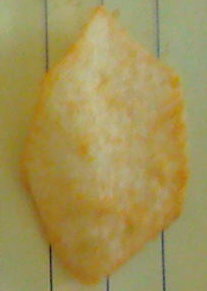Activity 19: Linear Discriminant Analysis
Linear discriminant analysis is one of the simplest classification techniques to implement because it enables us to create a discriminant function from predictor variables. In this activity, i tried classifying between nova and piatos. The features i used where their RGB values and size.
The f values are given as follows
f1 f2
1 636.89 593.53
1 588.54 551.74
1 587.14 561.56
1 553.42 515.54
2 340.98 392.78
2 409.91 434.11
2 438.59 474.51
2 431.21 462.89
An object is assigned a class with the highest f value. As can be seen, most of group 1 have high f1 values while those in group 2 have higher f2 values.
As can be seen in our confusion matrix, we have 100% classification
Here is my code:
clear all;
chdir(‘/home/jeric/Documents/Acads/ap186/AC18’);
exec(‘/home/jeric/scilab-5.0.1/include/scilab/ANN_Toolbox_0.4.2.2/loader.sce’);
exec(‘/home/jeric/scilab-5.0.1/include/scilab/sip-0.4.0-bin/loader.sce’);
stacksize(4e7);
getf(‘imhist.sce’);
getf(‘segment.sce’);
training=[];
test=[];
prop=[];
loc=’im2/’;
f=listfiles(loc);
f=sort(f);
[x1, y1]=size(f);
for i=1:x1;
im=imread(strcat([loc, f(i)]));
im2=im2gray(im) ;
if max(im2)<=1
im2=round(im2*255);
end
[val, num]=imhist(im2);
im2=im2bw(im2, 210/255);
im2=1-im2;
ta=sum(im2); // theoretical area
[x,y]=find(im2==1);
temp=im(:,:,1);
red=mean(temp(x));
temp=im(:,:,2);
green=mean(temp(x));
temp=im(:,:,3);
blue=mean(temp(x));
prop(i,:)=[red, green, blue, ta];
end
max_a=max(prop(:,4));
max_r=max(prop(:,1));
max_g=max(prop(:,2));
max_b=max(prop(:,3));
prop(:,4) = prop(:,4)/max_a;
prop(:,1) = prop(:,1)/max_r;
prop(:,2) = prop(:,2)/max_g;
prop(:,3) = prop(:,3)/max_b;
training = prop(1:2:x1,:);
test = prop(2:2:x1, :);
m1 = mean(training(1:4,:),1);
m2 = mean(training(5:8,:),1);
training1 = training(1:4, :);
training2 = training(5:8,:);
training1 = training1 – mtlb_repmat(m1, 4,1);
training2 = training2 – mtlb_repmat(m2, 4,1);
//LDA
n1 = 4;
n2 = 4
c1 = (training1)’ * training1 / n1;
c2 = (training2)’ * training2 / n2;
c = 1./8*(4*c1+4*c2);
p = [1./2; 1./2];
for i = 1:8
f1(i) = m1*inv(c)*training(i,:)’ – 0.5*m1*inv(c)*m1’+log(p(1));
f2(i) = m2*inv(c)*training(i,:)’ – 0.5*m2*inv(c)*m2’+log(p(2));
if f1(i)>f2(i) then
class(i)=1;
else class(i)=2;
end
end
class
you may look take a look at http://people.revoledu.com/kardi/tutorial/LDA/LDA.html for a more thorough discussion of LDA.



Leave a comment